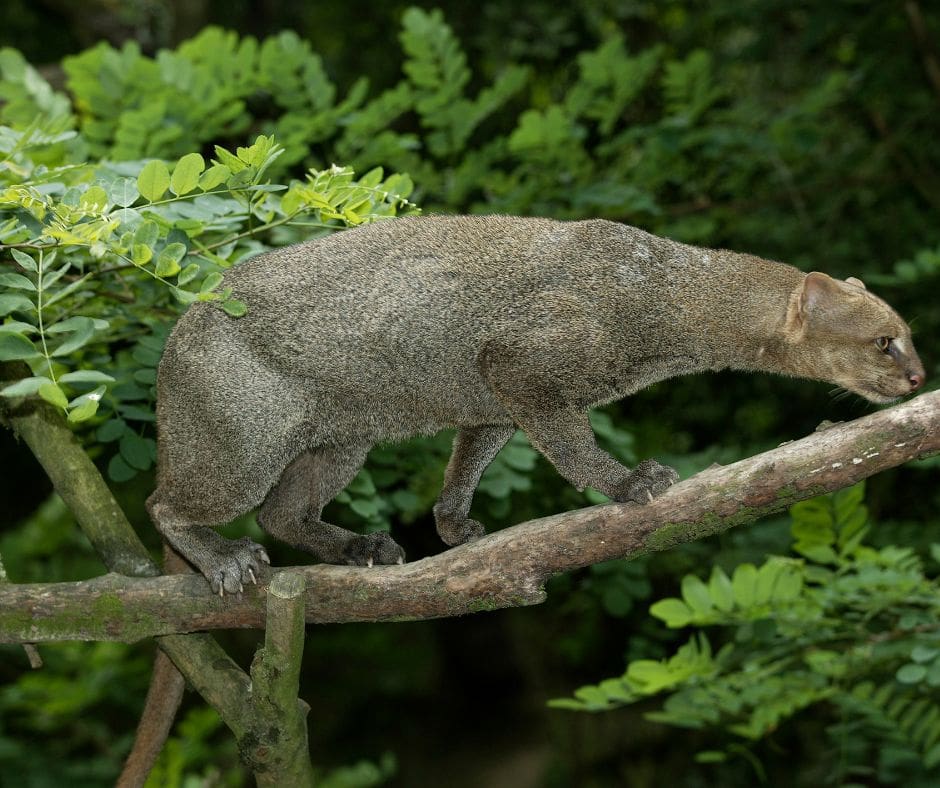Unveiling the Elusive Jaguarundi: Costa Rica’s Mysterious Feline
Deep in the lush landscapes of Costa Rica, the jaguarundi, a lesser-known wild cat, roams the dense foliage with a mysterious air. Unlike its more famous relatives—the jaguars and ocelots—jaguarundis maintain a low profile, both in their habitat and in the annals of wildlife fame. This article explores the intriguing existence of these creatures, their conservation status, where you might catch a glimpse of them in Costa Rica, their role in the local ecosystem, and the myths surrounding them.
Description of the Jaguarundi
Jaguarundis (Puma yagouaroundi) are unique in appearance compared to other cats in the Felidae family. With their elongated bodies, short legs, and small, flattened heads, they resemble otters more than typical felines. They possess a coat that varies significantly in color, ranging from black and brownish-gray to reddish-orange. This color variation does not signify different species but rather individual genetic traits. Adults typically measure about 30 inches in length, not including a tail almost as long as their bodies, and weigh between 8 to 20 pounds.
Conservation Status
 The jaguarundi is classified as “Least Concern” by the International Union for Conservation of Nature (IUCN), but this does not mean they face no threats. Habitat destruction and fragmentation are the main risks to their populations, primarily due to agricultural expansion and urban development. In Costa Rica, conservation efforts focus on protecting their natural habitats and creating biological corridors to ensure their survival and freedom of movement.
The jaguarundi is classified as “Least Concern” by the International Union for Conservation of Nature (IUCN), but this does not mean they face no threats. Habitat destruction and fragmentation are the main risks to their populations, primarily due to agricultural expansion and urban development. In Costa Rica, conservation efforts focus on protecting their natural habitats and creating biological corridors to ensure their survival and freedom of movement.
Where to See Jaguarundis in Costa Rica
Spotting a jaguarundi in the wild is a rare treat, given their elusive nature and preference for dense cover. However, they are distributed throughout Costa Rica, from the lowland rainforests to the more arid regions. Protected areas such as Corcovado National Park, Santa Rosa National Park, and the Monteverde Cloud Forest Reserve offer the best chances of a sighting. These cats are solitary and mostly active during the day, unlike many felines, which may increase the odds for keen-eyed visitors.
Rosa National Park, and the Monteverde Cloud Forest Reserve offer the best chances of a sighting. These cats are solitary and mostly active during the day, unlike many felines, which may increase the odds for keen-eyed visitors.
Ecological Contributions
Jaguarundis play a crucial role in their ecosystems as mesopredators, controlling the populations of smaller mammals and birds, which helps maintain a healthy balance in their habitats. By regulating these populations, jaguarundis contribute to the suppression of potential agricultural pests and the dispersal of seeds via their prey, aiding in forest regeneration and health.
Myths and Legends
In Costa Rican folklore, the jaguarundi is wrapped in an aura of mystery. There are stories where they are portrayed as guardians of the forest, appearing and disappearing like shadows. In some local tales, seeing a jaguarundi is considered a sign of good luck, suggesting an upcoming abundance or a protective shield against misfortune. Their secretive nature and rare sightings add to their mystical status among local communities.
The jaguarundi of Costa Rica remains one of the most enigmatic residents of the region’s rich biodiversity. While not as imperiled as other wildlife, their presence highlights the intricate web of life that thrives in this tropical paradise and underscores the importance of continued conservation efforts. Whether wrapped in myth or observed in the wild, the jaguarundi serves as a symbol of the natural wonders that Costa Rica strives to preserve for future generations. For those passionate about wildlife and the stories of the natural world, the jaguarundi is a fascinating subject deserving more attention and respect.






